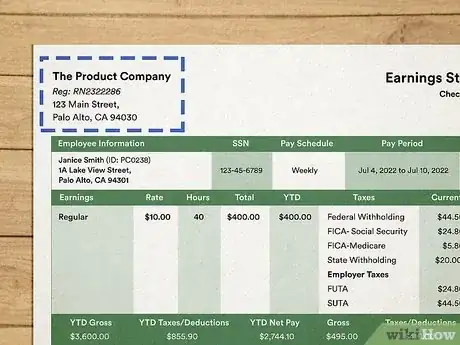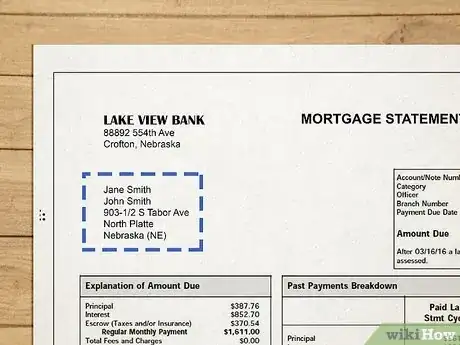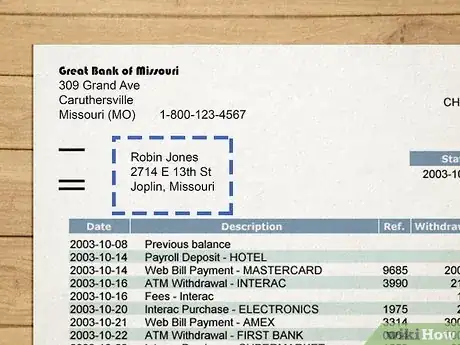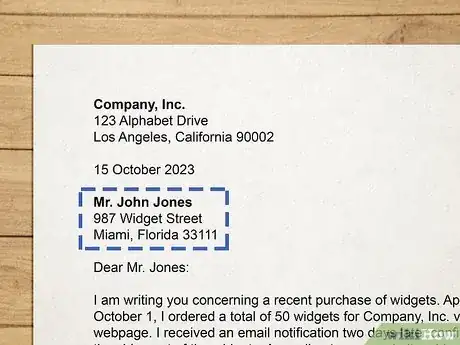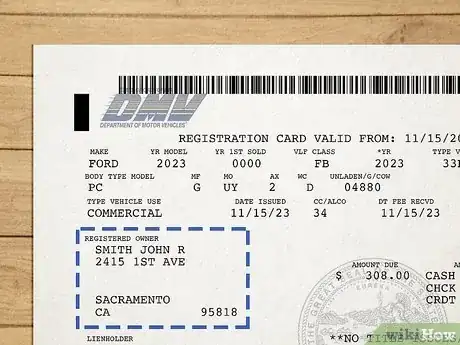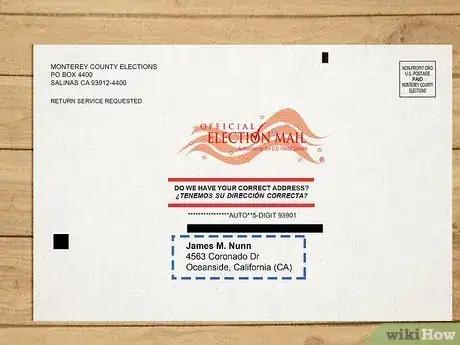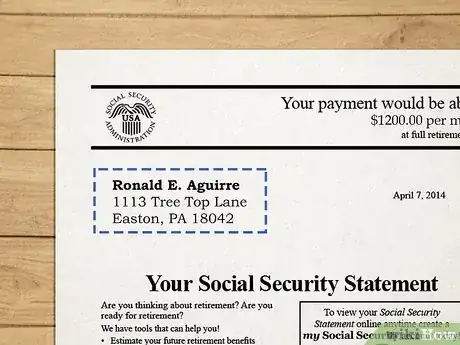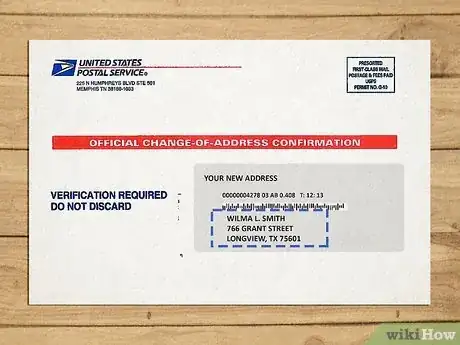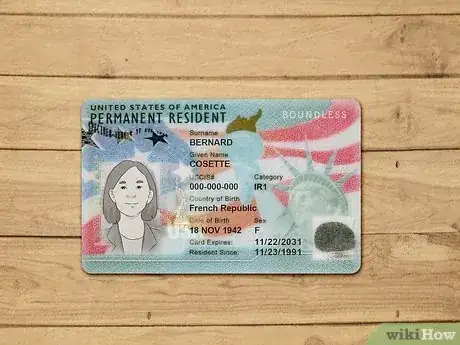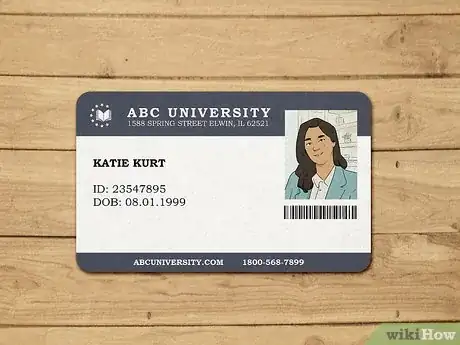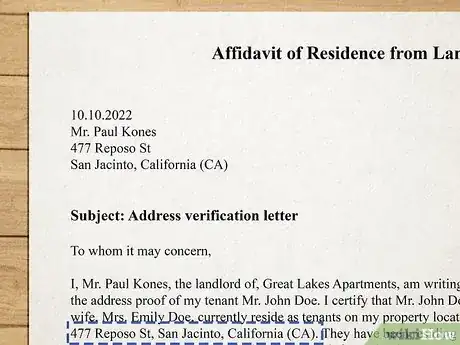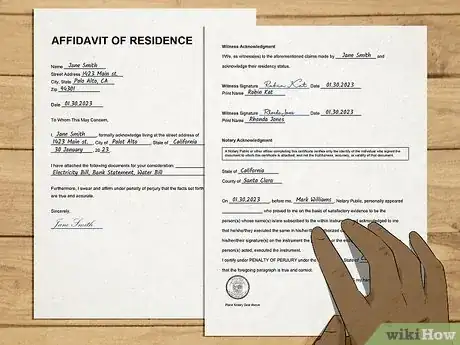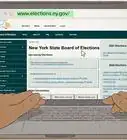This article was written by Jennifer Mueller, JD. Jennifer Mueller is an in-house legal expert at wikiHow. Jennifer reviews, fact-checks, and evaluates wikiHow's legal content to ensure thoroughness and accuracy. She received her JD from Indiana University Maurer School of Law in 2006.
There are 8 references cited in this article, which can be found at the bottom of the page.
This article has been viewed 393,295 times.
Whether you're opening a bank account, trying to get a new driver's license or other ID, or just seeking access to government benefits or services, chances are you'll need to provide proof of your address. At a minimum, this is a document that has your full legal name and address printed on it—but not just any document will do! Check out the list below so you can quickly pull together the documents you'll need.
Things You Should Know
- Use a pre-printed statement or bill addressed to you to most easily prove your address.
- Fill out a change-of-address card at the post office and use the confirmation you get back in the mail as proof of address.
- If you live with family, let them provide proof of address documents with their names on them, then provide proof of your relationship.
- Ask for a letter or affidavit of residency if you're staying in a shelter or other facility.
Steps
Paycheck Stub
-
Use the check stub from your most recent paycheck to prove your address. If you've recently moved, go ahead and change your address with your employer first—they won't ask for any proof of address. Your new address will appear on your next paycheck.[1] X Trustworthy Source State of Indiana Official site for state-approved sources related to life in Indiana, including laws, services, and culture Go to source
- If you don't want the clerk who reviews your documents to see your income, go ahead and cover it up—they're only concerned about the part with your name and address.
Tax Forms
-
A tax form dated within the past 12 months provides proof of residency. The tax reporting document issued by your employer (a W-2 or 1099 in the US) has your address on it, so you can use that to show where you live. If you haven't moved in the past year, your accepted tax return also works.[2] X Research source
- If you pay property taxes, use your receipt for property taxes as proof of address—just make sure it's also dated within the past 12 months.
Lease or Mortgage Statement
-
Any residential contract can be used to prove where you live. This is the easiest document to get if you've recently moved. Even if you haven't received any mail yet, you still have (or can easily get) a copy of your lease or mortgage contract. Either of those will have your full legal name and address on them.[3] X Research source
- If you signed a lease online, you still have the option to print off a paper copy for your records. Pull it up through your online account with your landlord.
Bank Statement
-
Your bank statement has your full name and address on it. If you've recently moved, go ahead and change your address with your bank—they won't need proof if you have an existing account. Then, wait for your monthly statement to arrive in the mail and you'll have the proof of address you need.[4] X Research source
- For some places, you can simply print off the statement from your online accounts. Others require you to take the printed statement to a local branch and get it stamped and verified, so ask about this ahead of time if you're not sure.
- Cover up your bank balance and any other information you don't want anyone to know. Your name and address at the top is the only part that's important.
Billing Statement or Official Letter
-
Any letter from a business or government agency proves your address. Virtually any letter you get in the mail that's addressed to you and has your full address on it will work, as long as that address is typed on a computer-generated form (not handwritten). This includes everything from credit card bills to court papers or account confirmation letters.[5] X Research source
- Generally, the clerk reviewing your document is only going to be concerned about the address portion. But if there are things on the statement or letter you don't want them to see, black it out ahead of time.
- If you've moved recently and haven't gotten anything in the mail yet, try triggering a letter from a business. For example, if you've signed up for paperless billing, you might toggle that off—which typically generates a confirmation letter sent to your address.
Car Title or Registration
-
If your car is registered in your name, use that as proof of address. Since a car title and registration is issued by a government agency, that document qualifies as proof of residency. Unfortunately, you typically need to provide proof of address to register or title a car, so this might not be a good option for you if you've recently moved.[6] X Research source
- This also works if the car is registered in your spouse's name, provided you have a marriage certificate that shows you're married.
- Title or registration of other vehicles typically works. You could also use any other license or registration issued by a government agency that includes your full name and address, such as a gun license or hunting and fishing license.
Current Insurance Policy
-
Any insurance policy with your full name and address proves residency. This includes auto, home, renters, health, and life insurance—just as long as the policy has your full address on it. Since insurance companies don't typically require proof of residency, this is a really fast option if you've recently moved—just change your address with the insurance company online, then print the policy.[7] X Research source
- An insurance card (the kind that goes in your wallet or your car's glovebox) typically won't work, though, because it usually doesn't have your address on it.
Voter Registration Card
-
Register to vote online and wait for your card in the mail. This is another great option if you've recently moved! When you register to vote online, your new voter registration card gets mailed to you and it will include your full name and address.[8] X Research source
- You could register in person as well—just make sure your voter registration card will have your full address on it so you can use it for proof of residency.
Government Account Statement
-
Request a statement from Social Security or another government agency. Call or go online to request a statement from any government agency where you have an account. When that statement arrives in the mail, you'll have the proof of address that you need (although this could take a few weeks).[9] X Trustworthy Source State of Indiana Official site for state-approved sources related to life in Indiana, including laws, services, and culture Go to source
- For example, if you live in the US, you can get your Social Security statement. Just go to https://www.ssa.gov/myaccount/statement.html and click on "Sign in" or "Create your account" to get started.
Change of Address Postal Confirmation
-
Register a change of address with the postal service if you've moved. In the US and other countries, the postal service offers a mail-forwarding service when you move. This service ensures that any mail sent to your old address will be forwarded to your new one—but you can also use it to generate a form for proof of address. When you fill out the change-of-address card with the postal service, they'll mail you a confirmation with your new address.[10] X Trustworthy Source State of Indiana Official site for state-approved sources related to life in Indiana, including laws, services, and culture Go to source
- Most places accept the confirmation letter as proof of address, but it's worth calling to make sure if you don't see this specifically listed as an acceptable document.
Immigration Documents
-
Current, valid immigration documents qualify if they include your address. You usually use your immigration documents to prove your legal status in the country, but you can also use them for proof of address. Not all immigration documents include your full address, but work permits or residency papers usually do.[11] X Research source
- Immigration documents typically aren't sufficient by themselves—you'll usually need at least one other document to put with them to prove your address.
- Passports, visas, and similar documents, on the other hand, generally won't work because they don't have your address on them.
Documents from Family Members
-
Letters addressed to family members work if you live with them. If you're a minor, you might not have any bills or government mail coming to you—but your parents probably do. A letter or statement in their name can also prove your address, provided you also have proof of your relationship to them.[12] X Research source
- You still need documents to prove your identity, such as a passport or a birth certificate.
- If you live with your parents, use your birth certificate—it proves your identity and shows your relationship to them for purposes of your proof of address documents.
- If you're married, you could also use a document with your address and your spouse's name on it (instead of yours). Just bring along your marriage certificate so you can prove you're married.
Student ID or School Transcript
-
If you're a student living on campus, use school documents to prove your address. Your school ID, transcript, schedule, even a tuition billing statement likely have your current school address on them. Even if you have your parents' address listed as your "permanent" address, your school still has a record of your on-campus address.[13] X Research source
- Still in high school? Your school record or transcript also has your name and address on it. Request one from your school's administrative office.
Letter of Residency
-
Provide a letter from the facility where you're staying. If you've moved to a halfway house, rehabilitation center, shelter, or other facility, a letter on facility letterhead is typically sufficient to prove your residency. Staff in the facility office will likely be familiar with what needs to be included in this letter—just let them know you need one.[14] X Research source
- The letter must clearly state that the facility will accept mail on your behalf.
- If you've recently moved to accept a new job or work assignment, your employer or employment agency can write up a letter on your behalf.
- If you're in the military, use military orders as long as they include your address or at least the base where you're stationed.
Affidavit of Residency
-
Fill out an official affidavit form and sign it in the presence of a notary. This might not work for private businesses, but government agencies typically have a form ready to go—just call the agency or search online for "residency affidavit" along with the name of the agency. Then, ask someone, such as a landlord or roommate, to vouch for your residency. Take the affidavit to a notary so the two of you can sign it. Bring along a government-issued photo ID because the notary will need to verify your identity.[15] X Research source
- Look for a notary at nearby bank branches, court buildings, postal or government offices, law offices, or check-cashing places. Search online to find the one closest to you.
- A notary is very different from a "notario publico," a high-ranking legal official in Latin American countries.[16] X Research source In fact, the law in many US states forbids the literal translation of "notary public" because of the profound difference between the two titles.[17] X Research source
- In the US, notaries charge a small fee for their services, usually less than $10. The maximum amount they can charge is set by law.
Warnings
- While they might be acceptable forms of identification to prove who you are, you typically can't use documents such as passports, insurance cards, or birth certificates as proof of address or residency because they don't display your current address.[18] X Research source⧼thumbs_response⧽
You Might Also Like
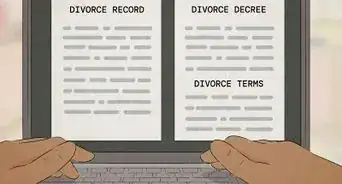 How to Look Up Divorce Records: Your Questions Answered
How to Look Up Divorce Records: Your Questions Answered
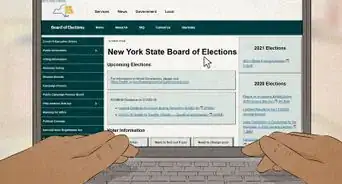


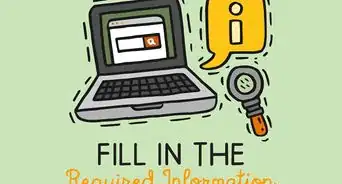



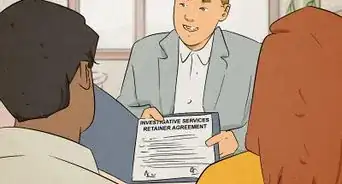




References
- ↑ https://www.in.gov/bmv/files/BMV_Documentation_List.pdf
- ↑ https://www.tn.gov/safety/driver-services/classd/dlproof.html
- ↑ https://dmv.colorado.gov/proof-address
- ↑ https://www.tn.gov/safety/driver-services/classd/dlproof.html
- ↑ https://dmv.colorado.gov/proof-address
- ↑ https://www.tn.gov/safety/driver-services/classd/dlproof.html
- ↑ https://www.tn.gov/safety/driver-services/classd/dlproof.html
- ↑ https://thelibrary.org/about/identification.cfm
- ↑ https://www.in.gov/bmv/files/BMV_Documentation_List.pdf
- ↑ https://www.in.gov/bmv/files/BMV_Documentation_List.pdf
- ↑ https://www.tn.gov/safety/driver-services/classd/dlproof.html
- ↑ https://www.tn.gov/safety/driver-services/classd/dlproof.html
- ↑ https://www.tn.gov/safety/driver-services/classd/dlproof.html
- ↑ https://dmv.colorado.gov/proof-address
- ↑ https://publicsafety.ohio.gov/static/bmv2336.pdf
- ↑ https://coloradosupremecourt.com/PDF/UPL/Notary%20or%20notario%20whats%20the%20difference_English.pdf
- ↑ https://www.sos.state.tx.us/statdoc/notariopublicoarticle.shtml
- ↑ https://moneyfacts.co.uk/banking/guides/can-you-open-an-account-without-proof-of-address/
About This Article

